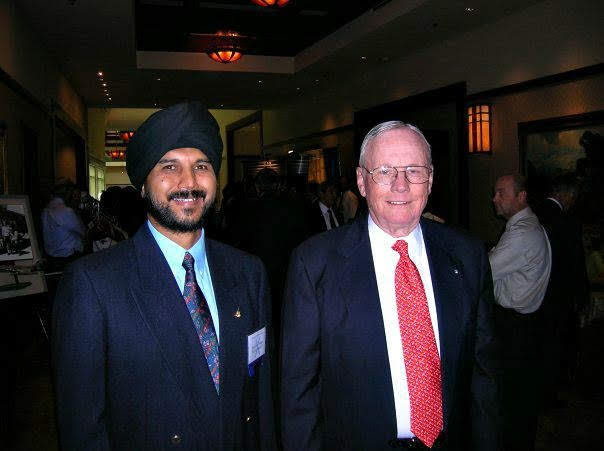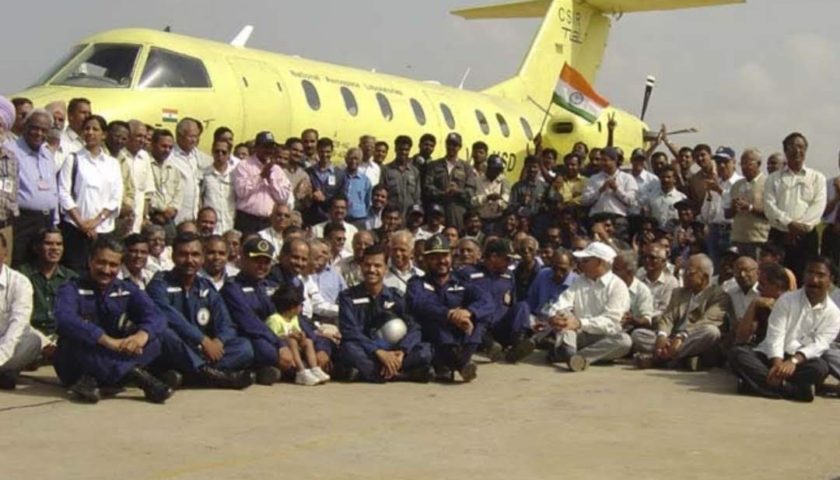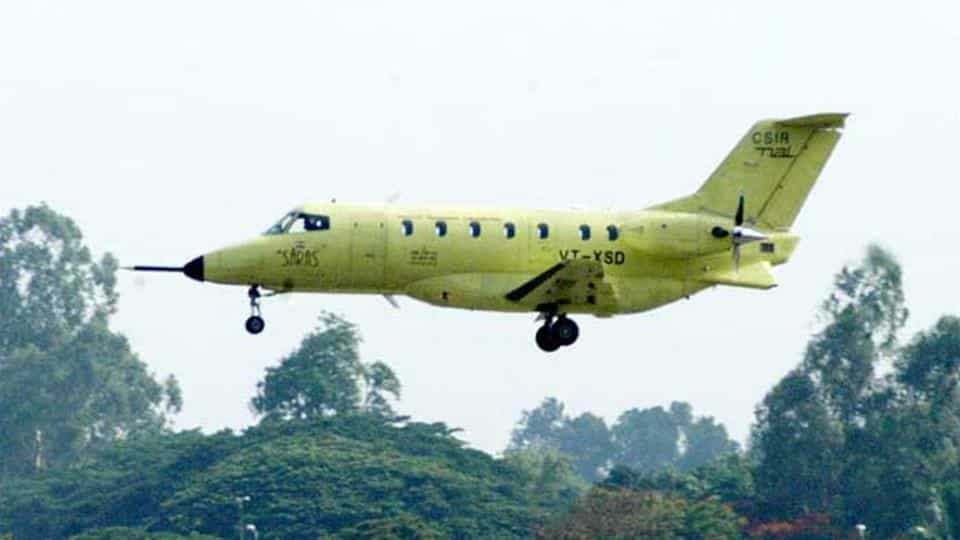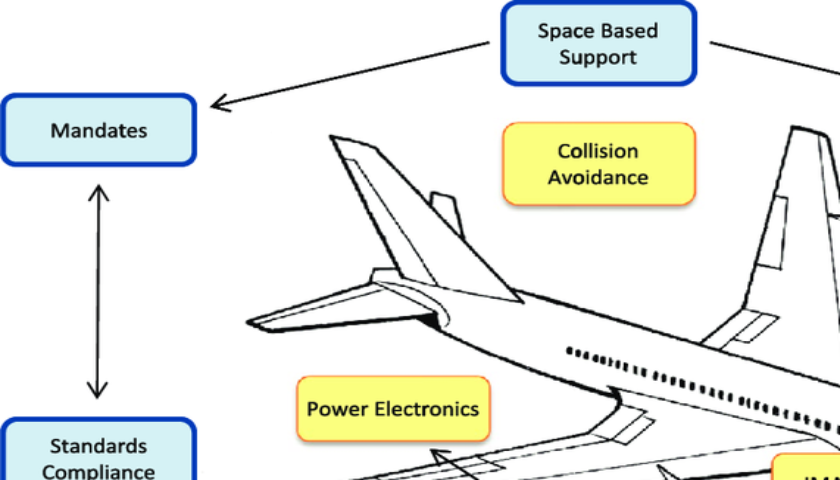Named Saras, after the Indian crane known for its grace and beauty in flight, the Light Transport Aircraft (LTA) has the design objective of being able to carry between eight and 14 passengers and extendable to an 18-passenger variant, in multiple modes of operation.
The flight-testing expertise and resources in India have matured adequately to undertake prototype flight-testing. The Light Transport Aircraft (LTA) program, SARAS a turboprop aircraft being developed indigenously by National Aerospace Laboratories (NAL) of Government of India, is the first civil aircraft program aimed at certification standard, FAR 25. The program is unique in that the propeller configuration of SARAS is pusher type and it is the first indigenously designed civil transport aircraft in India. In light of its unique configuration and in absence of any precedence for certification of an indigenously designed and developed aircraft against a FAR airworthiness standard in India, the prototype flight-testing of SARAS aircraft becomes critical. In this article, we will meet Gp Capt RS Makker (Retd), a test pilot, who had been involved with the project from Day One. Here we go on a short ride:

- Please share some information on your involvement with first indigenous civil commercial aircraft.
It was in March 2004, that I was re-posted to my Alma Mater i.e. Aircraft and Systems Testing Establishment (ASTE) for the second exciting tenure as a Test Pilot. This also coincided with the formation of Prototype Test Squadron (PTS) to handle various Proto Type Aircraft programmes which were at the threshold of magnificent blooming.
Initially, I was one of the test pilots for this program and very soon took over as the Chief of Trial Team as well as the Chief Test Pilot of the programme.
- What is the selection criterion for crew members for the first flight? Why is first flight a critical and an important milestone?
The test crew members (Pilots and Engineers) are required to be fairly experienced in terms of flying, preferably with sound and extensive knowledge on the science of aviation, logical and analytical skill, sharp piloting skills and a positive attitude (KSA). It was essential for the crew members for this Twin Engine Turboprop Light Transport Aircraft (LTA) to be able to conduct a thorough ‘What If’ Analysis’ covering all foreseeable scenarios which is one of the most challenging tasks on a prototype aircraft, as the first set of test crew are the only group that are aware of the all domains of the machine.
To further clarify this point- the designers are completely aware of their domains, the manufacturing team are aware what they have put together, the inspection and certification team have checked all individual systems as per their checklist/regulations. The test crew are the only one who see the complete aircraft. Therefore a lot of responsibilities lie on this core team. We are required to co-relate various situations and back it up with our team’s experience of transport aircraft flying. All of this had to be done keeping in mind safety as the highest priority. There are no second chances in Experimental Test Flying.
The first flight of any Proto Type aircraft is a major milestone. It is both a big & a small step for the Programme. This is indeed the first time that the aircraft is flown and all the individual designer groups see their designs come together as a complete aircraft. These are “Baby-Steps”. The degree of difficulty increases, if there are no simulators and there is no definite prior knowledge of aircraft or aerodynamic behaviour or characteristics of the aircraft.

- Everyone remembers the first flight, a lot of hard work is put in prior to the first flight. What are the important milestones before the conduct of the first flight?
Once the aircraft is designed by the designers of the programme, it requires constant involvement and discussions with the Test Crew. After several alterations, the cockpit is designed and thereafter assessed for the entire gamut of Ergonomics. The process of converting a mock cockpit made of images on drawing board to the installation of equipment, making the real cockpit is in itself a very involved process where we spend hundreds of hours.
The first cockpit is always a compromise and finalising it, is a major milestone. The individual systems are then put together and the aircraft is assembled in front of the team. These are then individually tested for their functionality and performance. After this, the integrated testing of the group system is carried out as well. Once all systems are functional on the aircraft, and in some form, a complete aircraft with all its systems is assembled, the complete aircraft is subjected to extensive Ground Vibration Tests, followed by full-scale engine run-ups, simulation of functionality and redundancies of various aircraft Systems and associated emergencies, also the operation of critical systems like landing gear, lift generating devices, various entry and exit doors for ingress and egress during Normal and Non-Normal Situations.
All the individual systems are tested together with multiple engine runs as well. Thereafter, logical evaluations and conclusions are drawn based on the data analysis and consequent results and performance.

- What was your initial impression of the aircraft and its system? What did you like/dislike the most
Saras – the Twin Engine light transport aircraft with aft-mounted Turbo-prop engines in pusher prop configuration was a very distinct distinct design. Its planform almost resembled a mini space shuttle.
The use of pusher engines on stub wings was a unique feature, hence it made me sceptical about this new design. I was very excited to work on this prototype project wherein, there was a synergic involvement of not just the crew like the test pilots but also the scientists (designers). There was a great amount of teamwork, dedication and coordination that went into this program.
Being involved from the prototype stage makes you feel as if the aircraft is your baby. You don’t have likes/dislikes; you cope with it, you are aware of all its positives, flaws, unique features, it is a different kind of bonding that happens with the aircraft and it lasts for your lifetime.
That is why even after a decade from my retirement I am happy to be involved with the programme. I regularly speak to the designers, participate in their discussions and convey my opinion. There was also participation in the recently commissioned flight simulator at NAL… it goes a long way…it is kind of “Bonded for Life”
- Accidents and incidents are common in any developmental programme. What should be the approach to prevent such things from happening again?
All prototype developmental programmes run into incidents / minor accidents / major accidents. It is rare to have a prototype programme with no unpleasant experiences. The organisations involved should be given the authority to be flexible in managing continuous core members who see through the complete programme.
Our design and development organisations are completely dependent on the Indian Air Force to provide them test crew which is different from how most of the other countries operate flight test programmes. The NFTC model appears to be successful in running the LCA programme. Maybe other prototype developmental programmes should follow something similar, to ensure that the core team is able to continue and see through the programmes. Prioritising flight safety by all involved is critical. It would be pertinent to do a ‘What If’ analysis as well as implement important lessons learnt from the other similar prototype programmes.
- The programme was dormant for more than 12 years after the accident. Do you think the technology and the requirement of aircraft is still relevant?
The Air Force needs approximately about 15 of this aircraft and may consider increasing this number at a later date. Regional connectivity on the UDAN routes will also benefit from such an aircraft as it is being designed to operate from high elevation airfields. I am sure that with many new regulations on the onboard system requirement, Saras Cockpit will also undergo a review and should be up to date with current needs.

- Saras was an unconventional aircraft, with aft-mounted turboprop engine in pusher configuration. In aviation, there is a saying ‘Don’t think too far outside the box’. Do you think this is the case with Saras?
CSIR-NAL made a significant effort to make the pusher configuration work. After the configuration review, where the pros and cons of both design choices were analysed in detail with wind tunnel and CFD data, the more conventional tractor configuration with engines mounted on the main wings has been finalized for the SARAS MK 2.
- The aircraft had other major issues related to safety and performance. Indian scientists are one of the best in the world. But do you think we have adequate engineering know how to resolve some of these issues without an adequate database?
It is very important for an entire eco-system to exist. This would not only include the research and development but also manpower, the right engineering unit, a design unit, scientists and the Test Pilots for the successful progression.
Boeing and Airbus have had their fair share of setbacks due to their designs, for eg the A-400/A-380 and the recent case of Boeing 737 Max. It is always easy to point fingers to show where we have had setbacks, however, it is more important not to lose focus and continue development of indigenous transport aircraft and make it safe to fly and be successful.
CSIR-NAL is a research laboratory with some of the best CFD, Wind tunnel facilities, structural analysis capabilities and structural testing facilities. It is also a pioneer in using composites in aircraft structures. Hence, NAL can develop the database necessary for the design. However, this takes time and this is where it is prudent to take the help of experienced designers from India and abroad. This is being done in the project for the various sub-systems.
With limited experience and resources, it is possible for NAL to give out great results as was the case of fly by wire (CLAW) team of LCA. I see no reason why Saras cannot repeat it.
- The modified Saras took to the skies once again on 24 Jan 2018. Do you think Saras Mk2 which is being developed as 19 seater aircraft would be better than its predecessor?
The performance analysis for MK 2 tractor configuration indicates that it is superior to the pusher configuration. As mentioned earlier as well, there is a vast makeover from its maiden design to what Saras Mk2 aircraft is presently. The new design features turboprop engines high mounted on the wings. This feature ensures efficiency, especially for shorter commutes.
- The present government intends to improve the rural air connectivity. India urgently needs small civil and military aircraft like Saras. What do you think would be likely induction date of aircraft as compared to the projected date of 2024.
This would be a boon for the people of this country, especially for improving and strengthening the regional travel and connectivity. It is designed around the philosophy of the UDAN making air travel affordable and accessible to every common citizen of this country.
Saras would be able to connect tier 2 and tier 3 cities with good speed and efficiency. The project is currently heading towards the PDR having completed configuration selection in May 2020. The ongoing pandemic has certainly resulted in a slow down. However, the real impact will be clear after Critical Design Review as there is some scope to absorb the delays till that time.

- I know that you are still involved with the project and development. It not only shows your commitment but also deep faith in our scientists, technicians, programme managers, engineers, and pilots. What are the best things about this project which are unique? Why at a personal level do you want this project to be a success?
I have been involved in this project as the Chief Test Pilot from the year 2004 till 2007 and thereafter as a Project Officer at the Air HQ from 2008 till 2009.
When this project was restarted, I was involved with it, in terms of briefing the crew, lending my advice and support to the new test pilots, engineers and the scientists associated with the new program.
This project has been a bold move, as it is the first civil transport aircraft of its kind. The project resonates with the Government policies of UDAN and being AatmaNirbhar Bharat making this country and its people self-reliant.
This project will boost the aviation sector, starting off from a 19 seater to a 150 seater in the coming years to enhance passenger connectivity. I feel this will be the logical path this programme will lead into and it should happen in future.

Gp Capt RS Makker (Retd) was commissioned into the fighter stream of IAF in Dec 86. He is a Qualified Flight Instructor and Experimental Test Pilot. He was Chief Test Pilot of SARAS prototype programme. He has extensive and varied experience on fighter, transport and training aircraft and accumulated more than 11000 hrs. Presently he is working with private airline as TRI and CRM facilitator.
Related article: Light Combat Aircraft: Tejas. Click here to read.
Related article: Flight Test Engineer. Click here to read.
Related article: Intrepid Pilot: Test Pilot. Click here to read.
Related article: Rafale a cause for celebration or concern? Click here to read.



